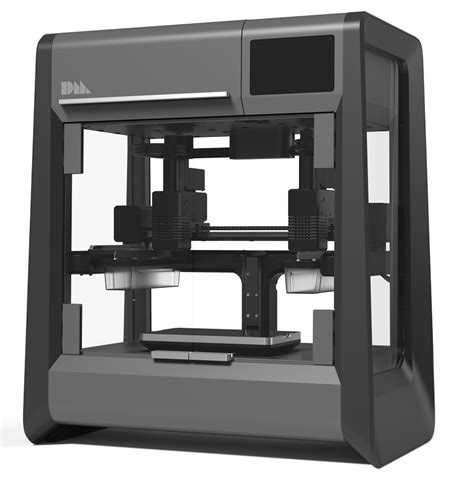How to make the best 3D Printing choice for your application
First up, let’s talk about the Desktop Metal Studio System for low-volume or functional prototype 3D metal parts:
What is unique about the Desktop Metal Studio System?
The Desktop Metal Studio System is an end-to-end process with a software-managed workflow (Fabricate) to ensure your success. It utilizes a 3D technology called Bound Metal Deposition (BDM), which is comparable to one of the most widely known plastic 3D printing processes, Fused Deposition Modeling (FDM).
The Studio System Printer comes with two ancillary system components depending on the chosen setup. The first is the Debinding unit which removes binding agents from printed parts and the second is a large-capacity sintering furnace that requires no special venting and is safe to touch. The entire system is considered office-friendly and calls for no special powder handling. The newly released Studio 2 has reformulated consumables to further simplify the process by cutting out the debinding unit completely and the burn out occurs in furnace.
Desktop Metal Studio System provides a new strategy to achieve an end-use metal part. Unlike traditional machining or tooling to cut a block of metal to create a metal part, the Studio System prints each part with stiff bound metal deposition “rods” as opposed to a flexible filament, that combines powder metal with a wax and plastic blend and uses a second head that deposits a ceramic support interface material.
Once the parts are removed from the printer in a “green state,” the embedded wax/plastic material is mostly eliminated in the debinding wash unit and the sintering furnace then fully densifies the part to achieve the final geometry to your specifications.
What is the Value Point of the studio system?
The Desktop Metal Studio System is designed around Metal Injection Molding technology (MIM). Similar to plastic injection molding, MIM requires expensive upfront Mold tooling which is usually cost-justified based on a high volume of repetitive parts annually. The Desktop Metal Studio System fills a great need in the marketplace for quality metal end-use parts in low volume production or for functional prototyping.
The Studio System is priced under $200k, which is significantly less than other print & sinter metal 3DP systems available.
Xact Metal’s XM200C
Next up is the Xact Metal XM200C Laser Powder Bed Fusion (LPBF) system, which employs a more traditional selective laser sintering process. In SLS, the toolpaths are directed by laser to weld the powdered metal into the desired shape for every layer but now engineered to a small footprint, and a price point that is accessible to more shops than ever before. Parts are ready right off the printer after removing from the plate with saw or EDM and breaking off supports with something as simple as pliers.
What makes it so special compared to other DMLS systems?
For a decade or so, metal SLS systems have been considered a high-cost, high-facility impact prospect, Xact Metal aimed to dispel that. It employs a cost-effective, but with a highly accurate gantry-style fiber laser scanner, as opposed to a galvo-mirror-based one. The 5” cubed build area is big enough to handle most handheld parts, but doesn’t sacrifice on accuracy. You can expect around a .002”-.003” (.05-.07mm) tolerance. Install is one of the easiest of any industrial-grade printer we’ve seen with standard 120V 20amp power and a 30psi inert gas feed connection that’s practically ready to go. Last but not least, it’s offered at a rather unheard of all-in price starting under $120K.
What value does this bring to your shop?
While additive manufacturing to some may seem like “nice to have” and spending the money on another CNC is the safe way to go, in the case of the XM200C it costs less than a 4th axis CNC and is like hiring another machinist as well. Much like the Studio, the complex parts are made mostly hands-free except for finishing so the setup and skilled work hours are minimal. Parts off the XM200C are 99.5% dense or better, fully weldable, and in a wide array of commonly used alloys such as stainless, tooling steel, copper, bronze and, if your facility allows, Titanium and Aluminum. This could allow for near net shape aerospace or medical components for those high-value clients or just being able to print parts that would need manual multi-day setup and fixturing allowing you to maximize your profit margins.
In summary
With either technology, you are able to print parts that may be impossible to machine entirely, consolidated into fewer parts or, with the right software, can be topologically optimized to be lighter and just strong enough for the application. The training and software you receive will make it seem less like rocket science and more like high school shop class and shows that your shop is moving into modern manufacturing processes that are becoming in high demand. It brings a value-added service to your shop for prototyping or end-use parts at a lower cost to you and a higher profit in return.
For more information on all of our 3D printers, please click below.









Leave A Comment